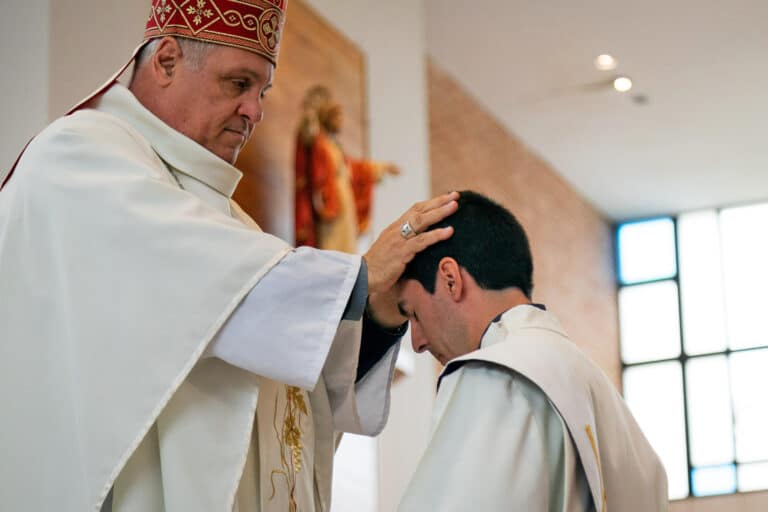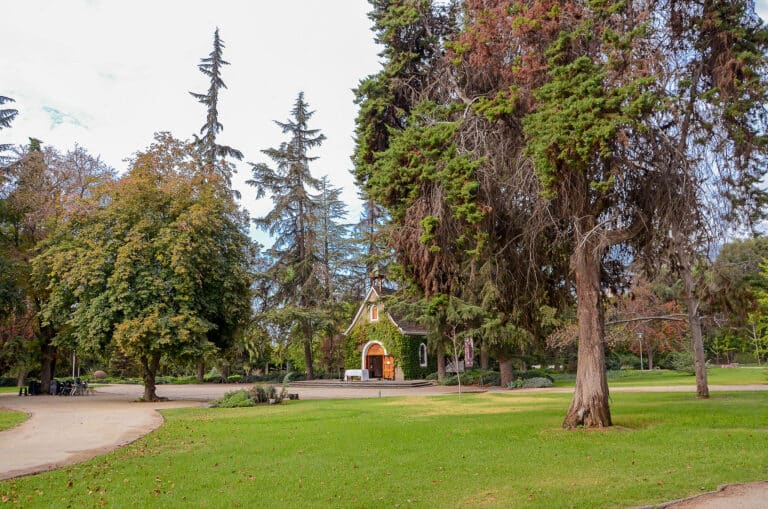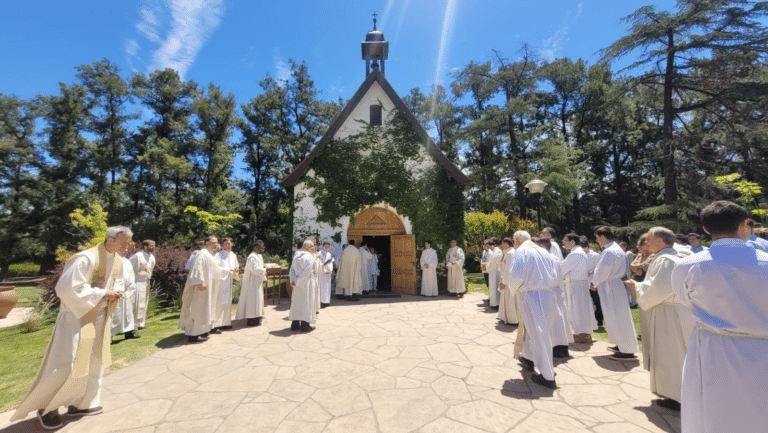In 1947, our Father and Founder travels for the first time to South America, passing through the countries where the Sisters of Mary had established themselves. At that time, the Secular Institute of the Schoenstatt Sisters of Mary, seeking the interior and exterior unification of the community, was divided into three distinct Provinces: one in Argentina, one in Brazil and one in Chile.
Trinitarian Assistance
At the request of the Father and Founder, these three Provinces were united in a “Trinitarian Assistance”. As he himself explains: “The three Provinces of the Sisters in South America have decided to unite. One Province is called child of Christ, the other child of the Holy Spirit and the third child of the Father. It is a different way of defining the ideals that have been practiced up to now. Until now the ideal had only caught a glimmer of the Mother of God. […] They began with the ideals from the perspective of the Schoenstatt Office and later decided: we want to be a Cenacle, Nazareth, and Tabor Province. Hence, child of the Son, child of God the Father, and child of the Holy Spirit. The three Provinces united in a Trinitarian Assistance. The goal is to reach the Triune God, by beginning with the Mother of God.”
Each of the Provinces is responsible for ensuring a bond with one person of the Blessed Trinity, so the Sisters in Argentina want to be children of the Father, a new Nazareth; the Sisters in Brazil children of the Son, aiming for the Tabor; and in Chile the Sisters are children of the Holy Spirit, a new Cenacle.
At first this mission was given only to the Institute of the Sisters of Mary, but with time and the Founder’s broad outlook, the mission was extended to the entire Schoenstatt Family in each of these countries, which assumed the spirit of Trinitarian Assistance.
“Father Kentenich, when he travels through the different countries, especially Argentina, Brazil and Chile, meets and discovers certain characteristics of the soul of each land. And so, each country has its original face and mission which provides it with an identity, but together they complement each other and come together,” says Mrs. Raquel Padilla, of the Institute of Our Lady of Schoenstatt.
“Father Kentenich has strategic thinking and his pastoral strategy is adapted to each culture. The Trinitarian Assistance is a joint plan he detects with the signs. He perceived he had to link the people of Latin America with the Holy Trinity through Mary”, says Father Ottomar Schneider.
Argentina: Father
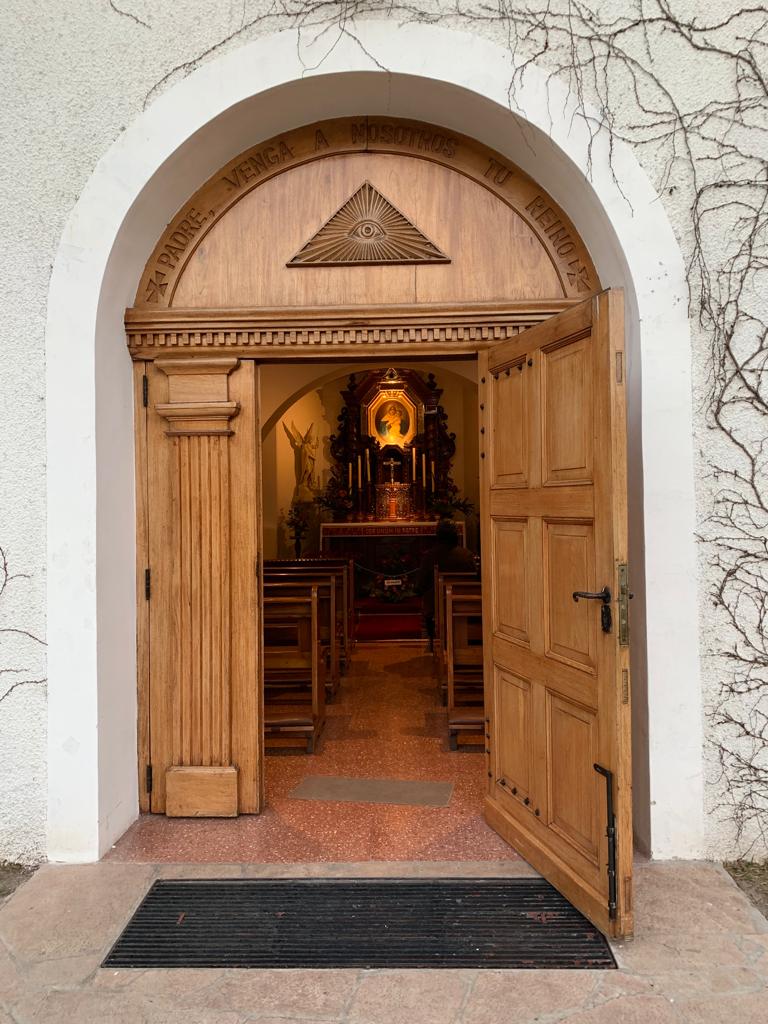
Argentina has a deep affinity to the figure of God the Father and lives the spirit of Nazareth.
“One of the central messages of Schoenstatt is the paternity of God and the need to shape his image in men, who should become a transparency of the divine. Father Kentenich discovers the paternal spirit in the soul of the Argentinean people, and that is why he gives Argentina this mission of being a transparency of the Father”, explains Mrs. Raquel Padilla, who is Argentinean.
The national ideal of the country is expressed in the phrase “With Mary, Family of the Father“:
“This ideal rests on the idea that God the Father is the center, and our path is directed to Him and in Him the maximum fulfillment of our human reality will be realized. In Him and with Him we form a Family, the Family of Nazareth. The head, the center is the Father,” says Mrs. Padilla.
To be a Family of the Father is a great challenge: “The world is facing a great crisis regarding paternal authority, for this reason it is important that the Schoenstatt Family of Argentina forges and lives the natural and supernatural organism of attachments. A crucial point is to reinforce the figure of the father both at the natural and supernatural level. To guarantee this spirit, it is necessary to cultivate a strong attachment to God the Father, becoming a reflection of God’s love, of a Father rich in mercy; it is also necessary to cultivate a strong attachment to Father Kentenich, since he is a transparency of God’s love and paternal presence for us”, affirms the Lady of Schoenstatt.
Brazil: Son
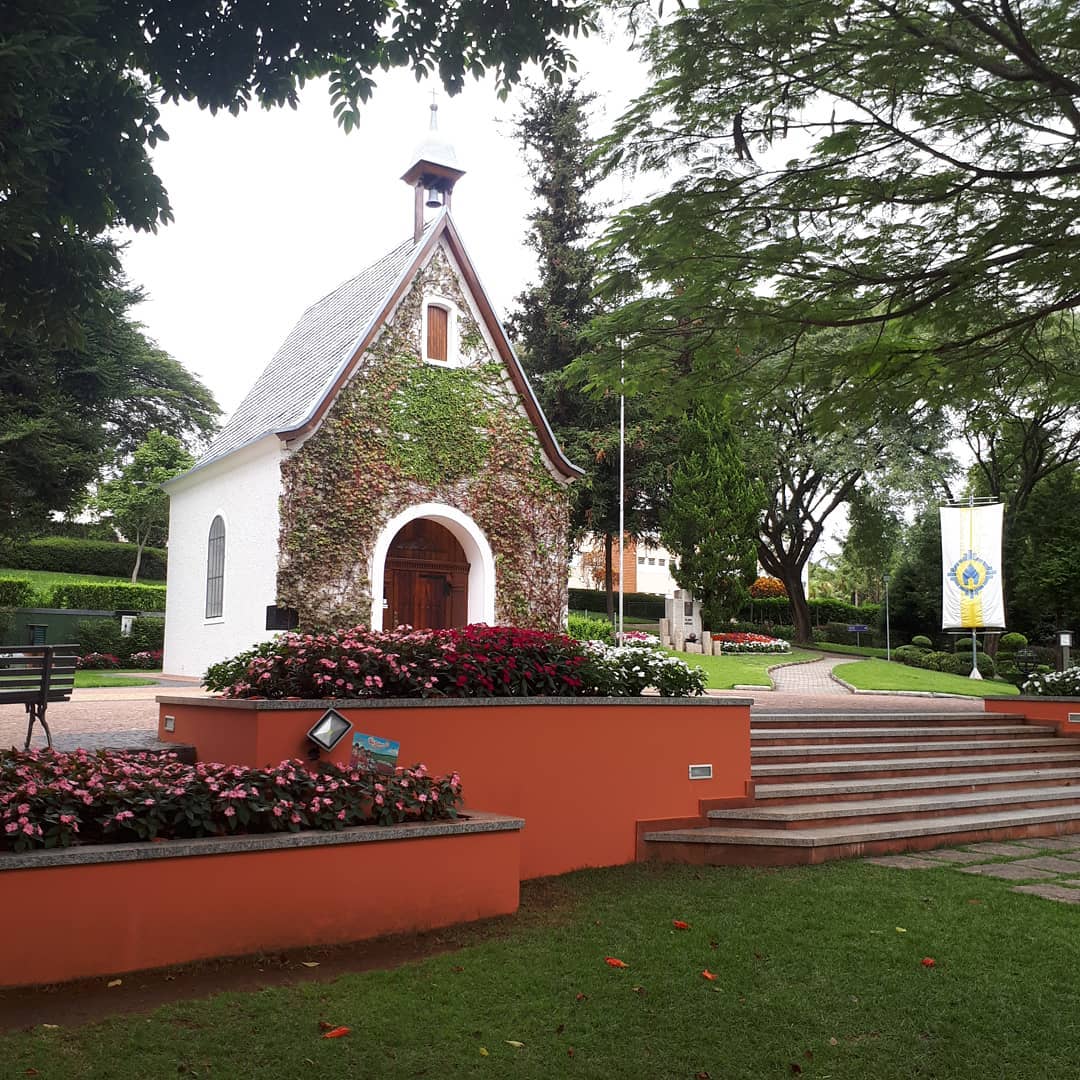
The expression “Tabor“, “to be Tabor”, is heard everywhere in Brazil. This is the ideal of the Brazilian Schoenstatt Family. “When the Father and Founder arrived in Brazil, he observed the people had a very childlike receptivity, an open and childlike heart. This naturally refers to the person of Christ, the Son, so he entrusted the Brazilian people with the mission of heroic childlikeness, which is embodied in the expression “Tabor”, which he calls ‘his secret’ in the Founding Document”, commented Father Ottomar Schneider.
From the Shrine, the Mother of God wants to form each Brazilian in the image of a transfigured Christ. Another aspect is when the Father and Founder says, quoting the Scriptures, that Tabor is a place where it is nice to be. Each Shrine should be a Tabor of Mary’s glories and, as living Shrines, the Schoenstatt children have the mission of radiating Tabor into their being.
According to Father Ottomar, being a living Tabor means, in practice, to live childlikeness: “To be childlike we need to let the Mother of God educate and form us to overcome the difficult situations of our life, while having the image of the transfigured Christ as our model and ideal.
Chile: Holy Spirit
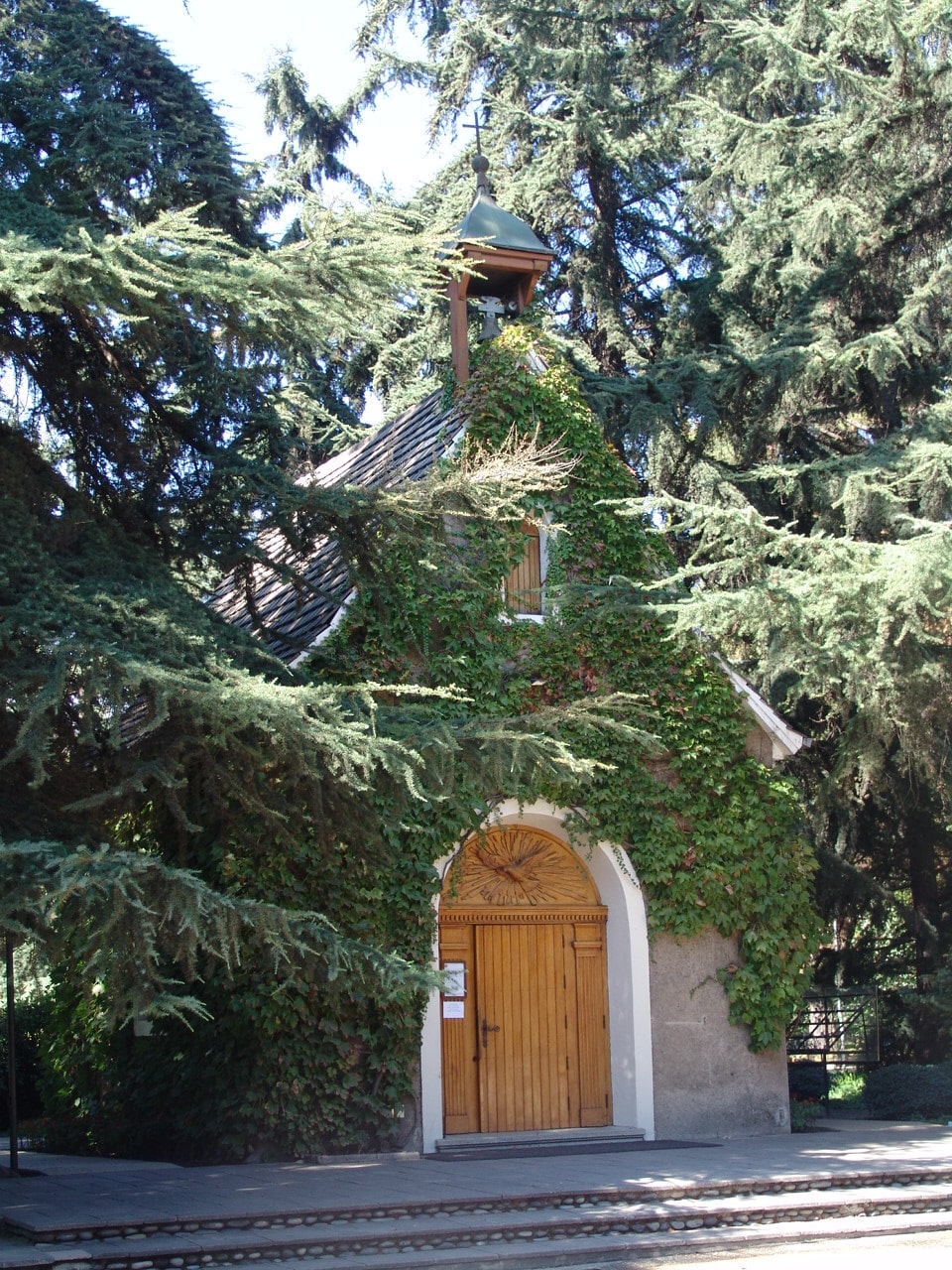
On the other side of the continent, behind the Cordillera, is the “Cenacle of Schoenstatt”, Chile. In this country the Father and Founder sees a great connection with the Holy Spirit. “The mission of Pentecost, of the Cenacle, is very closely related to the spirit of being a Family, of communion. Pentecost is the sending of the apostles on mission and in Chile this missionary characteristic emerged since the very beginning and has continued.
The Cenacle episode is the moment when the apostles, with Mary and in prayer, are in a special communion and receive the strength of the Holy Spirit to go out on mission. The whole Movement throughout the world has this missionary characteristic, but I believe it is something very particular in Chile”, says Father Ivan Simicic, a Chilean priest.
An important episode in Schoenstatt, the Third Milestone in the history of Schoenstatt, takes place in Chile, and it is directly related to the Cenacle mission according to Father Ivan: “The emphasis of this third Milestone is a new missionary sending forth from the Father and Founder for the entire Movement, so Pentecost is related to the 31st of May. The Schoenstatt Family of Chile feels a great responsibility for this new sending forth, which presents Schoenstatt’s mission for the Church”.
The national ideal of the country is to be “Cenacle of the Father for a new Pentecost.”
“In practice, to live the Cenacle ideal is to live this missionary spirit in a concrete way; from the Shrine, we should be missionaries, becoming disciples today, taking up the mission of the 31st of May, living the organic way of thinking, living and loving in covenant with the Church, and this requires renewal,” said Father Iván.
Mary leads us to the one God
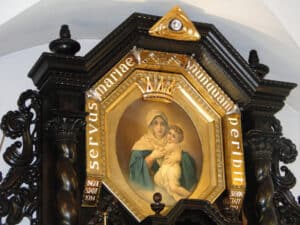
Source: Schoenstatt Brasil

